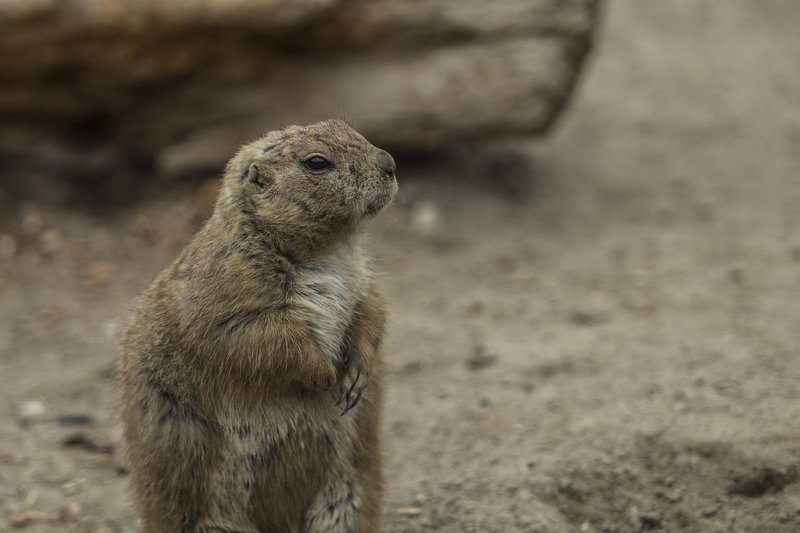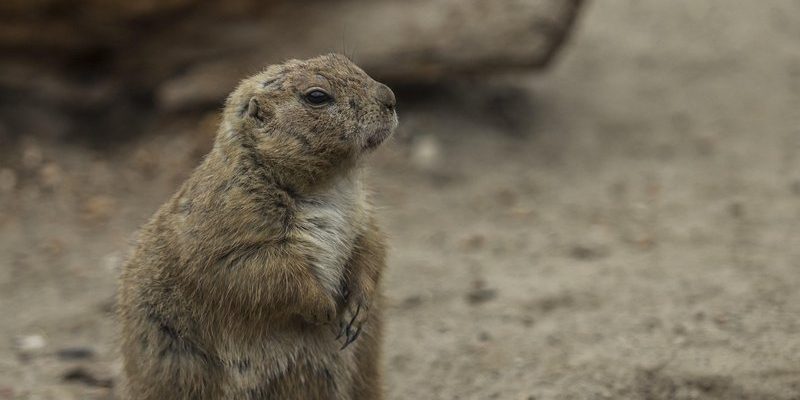
So, what exactly do prairie dogs do to keep their ecosystems thriving? To put it simply, they’re like the unsung heroes of the prairie. They dig intricate tunnel systems, which facilitate air circulation and water drainage in the soil. Their burrowing habits create a unique habitat that countless other animals rely on. From predators like hawks to smaller critters like insects, prairie dogs are at the center of a bustling community beneath the surface. Let’s dive deeper into their role and see how they contribute to the balance of nature.
What Are Prairie Dogs?
Prairie dogs are small, burrowing rodents that live in large colonies, known as towns. These towns can be massive, sometimes stretching over hundreds of acres and housing thousands of individuals. You might be wondering what sets them apart from other rodents. Prairie dogs have strong hind legs that allow them to stand upright, and they have a unique vocal communication system that sounds almost like a series of barks or yips. This communication helps alert their colony to dangers like predators.
There are several species of prairie dogs, with the most common being the black-tailed prairie dog. They have a tan coat with a black tip on their tail, making them easy to identify. Other species include the white-tailed prairie dog and the Gunnison prairie dog. Each of these plays a comparable role in its environment, but they also have unique adaptations suited to their specific habitats.
HABITAT: Prairie dogs primarily inhabit grasslands and shrubby areas in North America, notably across the Great Plains. Their homes are typically found in areas where the soil is soft enough to dig. This is why you often find them in flat, open areas where grass thrives, which also provides food for them.
Burrowing Behavior and Soil Health
One of the most remarkable things about prairie dogs is their extensive burrowing behavior. When they dig their *burrows*, they aren’t just making a cozy home; they’re influencing the entire ecosystem. Think of it like an underground city, complete with tunnels and rooms that serve different purposes. These burrows help aerate the soil, allowing air and water to penetrate deeper layers, which promotes healthier plant growth above.
Here’s the thing: as prairie dogs dig, they also bring nutrients to the surface. This occurs because the soil from deeper layers is pushed up. So, when they’re busy burrowing, they’re essentially fertilizing the surrounding area, which supports the growth of grasses and other vegetation. Healthy vegetation, in turn, supports a variety of herbivores, from rabbits to deer, creating a vibrant food web.
Moreover, these burrows are crucial for water retention. When it rains, the tunnels allow water to soak into the ground instead of running off. This is particularly important in dry regions, where every drop counts. So, prairie dogs are like the unsung irrigation system of the grasslands, unknowingly helping their environment thrive.
Supporting Biodiversity
Prairie dogs are a keystone species, meaning their presence significantly affects the ecosystem. Their burrows create homes for many other animals. For example, when they dig, they inadvertently provide shelter for snakes, rabbits, and even birds. Burrowing owls and ferruginous hawks often choose to make their nests in abandoned prairie dog burrows, taking advantage of the ready-made homes.
Additionally, prairie dogs are crucial for maintaining the balance of their ecosystem. By grazing on grasses, they help control plant growth. If prairie dog populations decline, the unchecked growth of grasses can lead to overgrazing by other herbivores, which can be detrimental to the overall health of the ecosystem. Essentially, prairie dogs act as lawnmowers for the prairie, keeping things in check.
Their role goes beyond just providing shelter. When prairie dogs feed, they also create patches of ground that allow for different plant species to thrive. This diversity attracts various insects, which in turn support birds and other wildlife. The intricate relationships fostered by prairie dogs create a rich tapestry of life that would be hard to replicate without them.
Predator-Prey Dynamics
Interestingly, prairie dogs also play a significant role in the predator-prey dynamic within their ecosystem. They are a primary food source for many predators, including coyotes, hawks, and even snakes. In this way, they help sustain the populations of these predators, which keeps the entire ecosystem in balance.
When a predator is in the area, prairie dogs have an alarm system that kicks into gear. Their distinctive alarm calls alert the rest of the colony to take cover in their burrows. This behavior not only helps them survive but also ensures that these predators don’t overconsume any one species in the area. It’s a delicate dance of survival that showcases the interconnectedness of prairie life.
While it may seem harsh, this predator-prey relationship is essential for maintaining biodiversity. Predators help control the population of prairie dogs and other herbivores, which can prevent overgrazing and promote healthier ecosystems overall. It’s a cycle of life that reveals just how important each player is in the grand scheme of things.
Threats to Prairie Dogs
Despite their critical role, prairie dogs face numerous threats that jeopardize their existence and the ecosystems they support. Habitat loss is one of the biggest challenges they encounter. As urban areas expand and agricultural land increases, the natural environments where prairie dogs thrive are disappearing. When their homes vanish, so do the intricate relationships they foster.
Disease also poses a significant risk. Outbreaks of bubonic plague can wipe out a large percentage of their populations. This not only affects prairie dogs but also cascades through the food web, impacting their predators and the overall health of their ecosystem.
Human activities, like hunting and trapping, add additional pressure. Though some areas have protections in place, many prairie dogs still struggle to survive amid increasing land development and changing environments. Conservation efforts are vital to ensure their populations remain stable, which in turn supports the entire prairie ecosystem.
Conservation Efforts and the Future
Conservation is key to protecting prairie dogs and the ecosystems they support. Many organizations are actively working to preserve prairie dog habitats through various means, including habitat restoration, enforcing protective laws, and educating the public about their importance. You might be wondering how everyday people can help.
Participating in conservation programs, supporting local wildlife organizations, and simply spreading awareness about prairie dogs can make a difference. By understanding the vital role they play, more people might be inspired to protect these creatures and their habitats.
Additionally, establishing protected areas where prairie dogs can thrive undisturbed is crucial. These reserves not only safeguard prairie dog colonies but also support the diverse wildlife that relies on them for survival. The future of prairie dogs is tied to our actions today, and the more we understand their role, the better equipped we’ll be to ensure their survival.
In summary, prairie dogs might be small, but their impact on the ecosystem is monumental. They serve as engineers of the grasslands, creating homes for countless species and promoting soil health through their burrowing behavior. Their role as both prey and predator helps maintain the balance of nature, making them a crucial part of the prairie’s web of life.
As we face challenges in conservation and habitat protection, understanding the prairie dog’s significance becomes even more vital. This little creature is more than just a cute face in the field; it’s a cornerstone of its ecosystem. Protecting prairie dogs means protecting the intricate balance of life they support—something we should all strive to do. So next time you’re in the prairie, take a moment to appreciate these fascinating animals and the role they play in the natural world.

